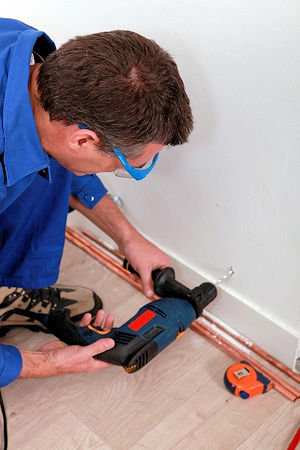Engineering Controls
Since the science of ergonomics involves designing the job to fit the worker, let's look at engineering controls that improve the design of tools, equipment, and the work area to mitigate hazards.

Engineering improvements include rearranging, modifying, redesigning, or replacing tools, equipment, workstations, packaging, parts, or products. These design changes can effectively reduce or eliminate the underlying hazards that cause injuries.
Below are a few examples of how simple engineering controls can be used to reduce ergonomic injuries:
- Use a device such as a dolly, forklift, or crane to reposition heavy objects to limit force exertion.
- Reduce the weight of a load such as lumber to limit force exertion.
- Reposition a work table to eliminate a long/excessive reach and work using awkward postures.
- Use staple guns or roofing nailers instead of hammers to shingle a roof.
- Use circular saws instead of handsaws to cut lumber.
- Use augers instead of post hole diggers or shovels to dig holes.
Knowledge Check Choose the best answer for the question.
2-2. Which is an example of an engineering control designed to reduce exposure to the hazard?
You forgot to answer the question!
